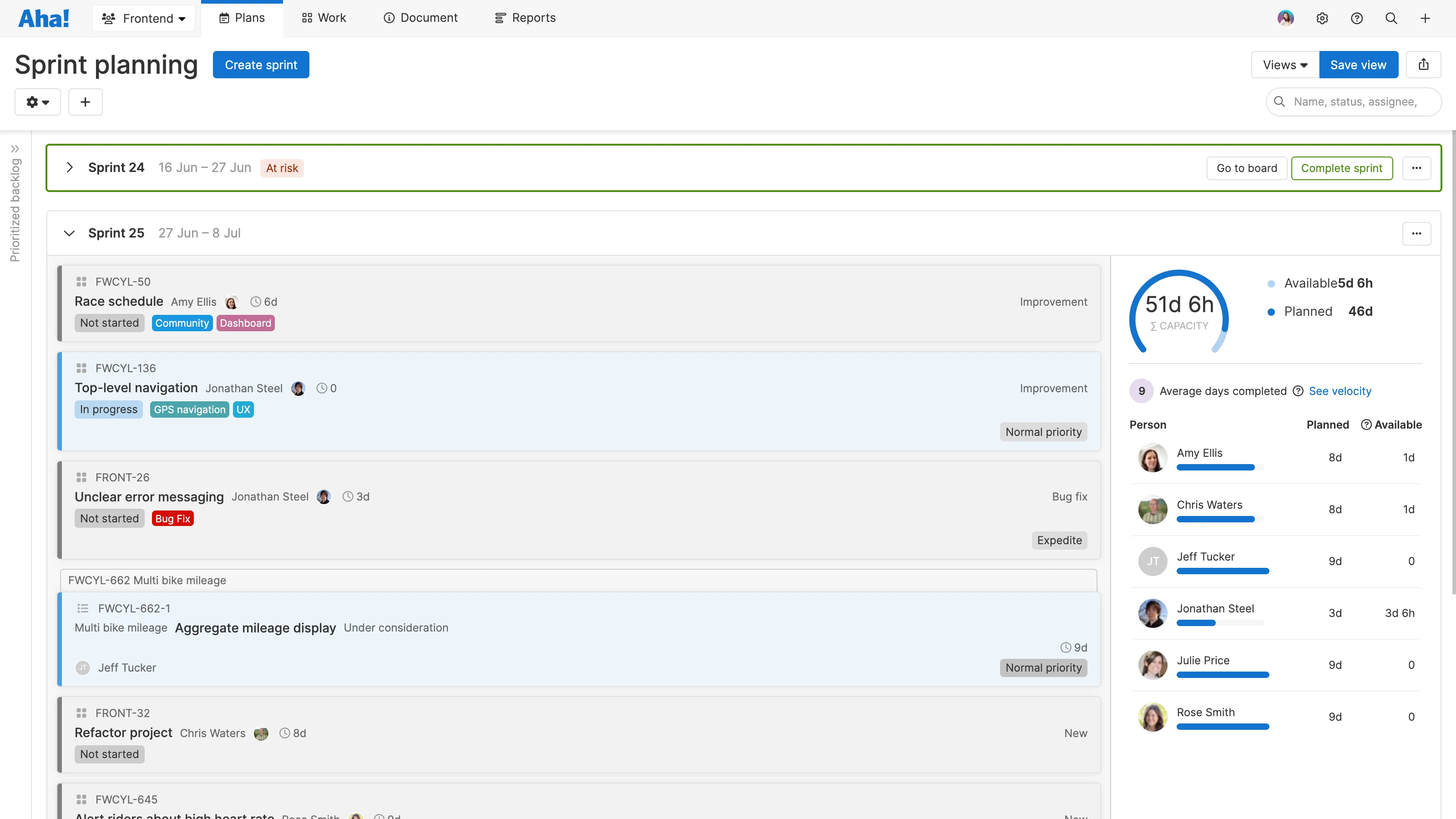
Manage sprint capacity by team or individual in Aha! Develop
Manage Sprint Capacity by Team Member in Aha! Develop
Healthy engineering teams are the most productive. And if you look closely, the most productive teams work and iterate quickly. A short sprint reduces risk and makes work more manageable. It also makes it easier to identify the right amount of work for each person. And frequent shipping of quality features just feels good for everyone — it is a virtuous loop.
Today's release for Aha! Develop helps you manage sprint capacity based on individual availability and performance.
Before today, you could manage sprint capacity at the team level in Aha! Develop by entering the team's available capacity in story points or time. You could even view the team's average capacity over the past six sprints for insight into historical performance. And you could track individual workload too. For each sprint, you could see the number of items assigned to a team member and the estimated effort. This was helpful for understanding how work balanced out across the team.
But there are even more variables to consider when setting ambitious, achievable plans — such as the availability of each person on the team and their individual velocity. Having visibility into these variables allows you to divide work and make sure no one is drastically under or overcapacity. And you can deliver as much value as possible with every iteration.
With today's update, customers on the Aha! Develop Advanced plan can manage sprint capacity by team member. When enabled, teams are assigned a default work schedule — which individual team members can then update based on their actual availability for each sprint.
Aha! Develop uses this information to calculate the sprint capacity for each person, factoring in their average velocity over the last three sprints. Overall sprint capacity is simply the sum of this individual data. Now you have a more accurate understanding of how much work people can take on — so each sprint is as productive as possible.
Let's take a more detailed look at how to manage capacity by team member:
Enable individual sprint planning
To get started, team owners will need to set Sprint planning to Individual in team settings. The default team schedule uses standard Monday–Friday working days and sets daily capacity at one point per person per day. This schedule will be used when an engineer has not updated their individual schedule or there is not enough historical data to calculate their average velocity.
Update availability
Now let's go ahead and create a new sprint. You can see all team members listed in the right panel along with their planned and available capacity. Each person can click Manage schedule under their name and edit their schedule to add any non-working days for that sprint. In the example below, Amy updates her schedule to include upcoming PTO and her available sprint capacity automatically changes to seven points.
Set realistic sprint goals
Once everyone has updated their availability, it is time to plan the sprint. Start by bringing the right amount of work into the sprint. Then assign work based on what each engineer can take on. You can see here that each person's planned and available capacity updates in real time as you allocate work. Now you can feel confident that your team can achieve the work you commit to.
Empower your team to achieve more — without overloading them.
Take some time to check out this new sprint planning option in your account. We hope this improved visibility into teammate capacity leads to more successful sprints and happier teams.
Sign up for a free trial of Aha! Develop
Aha! Develop helps agile development teams connect to the roadmap, optimize workload, and streamline reporting. Sign up for a free 30-day trial or join a live demo. See why more than 600,000 product builders trust our software to build lovable products and be happy doing it.






